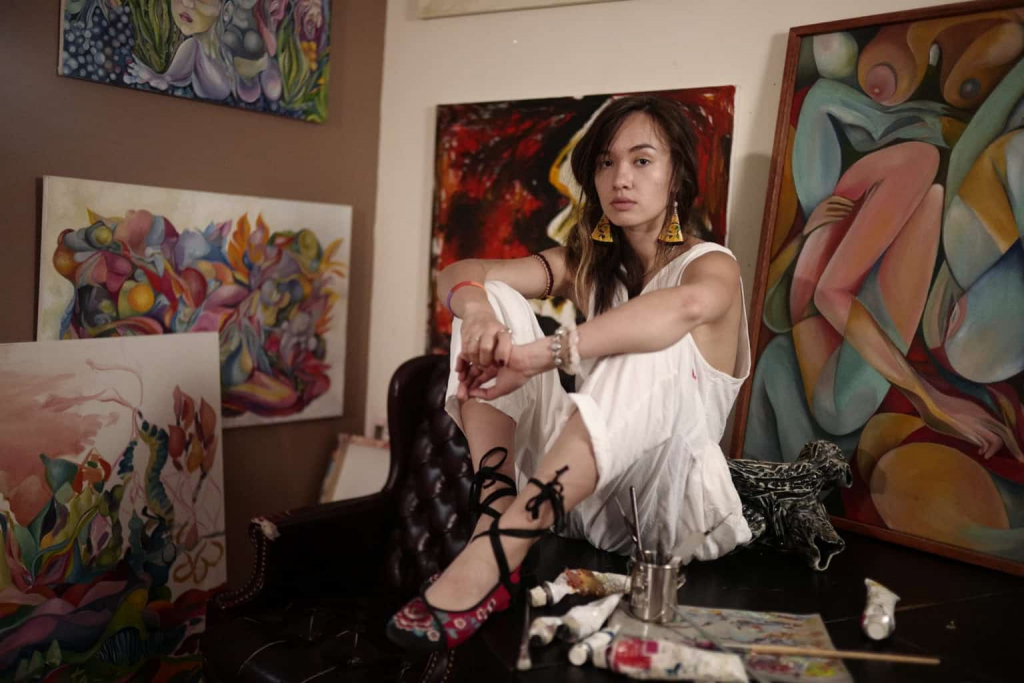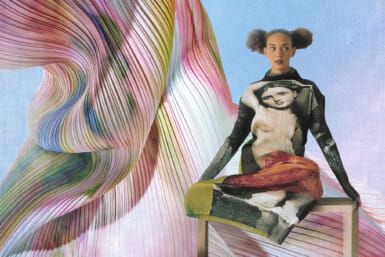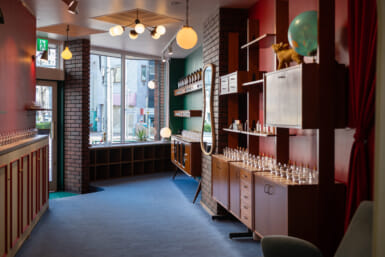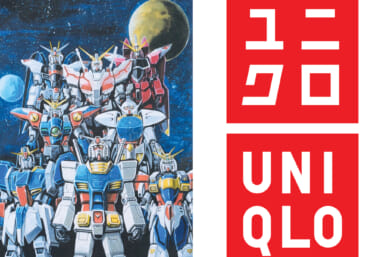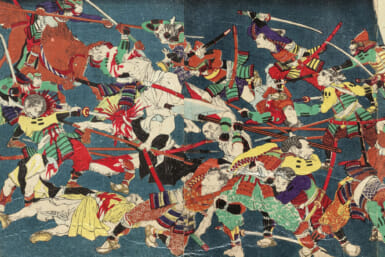The career of Icelandic and Chinese painter Eirdís was just taking off in Beijing when the city was brought to a halt in January due to the burgeoning coronavirus pandemic. Quarantined, and not able to attend her shared art studio, Eirdís bought a plane ticket to Japan, just days before the now-notorious Diamond Princess cruise ship docked in Yokohama harbor.
With only five acrylic colors in tow, Eirdís arrived in Tokyo to stay with her boyfriend. She expected to stay two or three weeks. Now with borders closed, flights canceled and more Covid-19 cases being confirmed in Tokyo every day, the painter anticipates she will be in Japan until at least this summer.
“At the time it didn’t seem like it would spread this far”
“The situation didn’t seem as bad [in Tokyo],” says Eirdís (full name Eirdís H. Chen Ragnarsdóttir), during a Skype interview. “At the time it didn’t seem like it would spread this far…. There was no way of knowing.” In Tokyo, Eirdís, an “impulsive workaholic,” painted every day. UltraSuperNew Gallery in Harajuku was a short walk from where she was staying. The gallery canceled its upcoming exhibition in early April, just prior to Prime Minister Shinzo Abe’s state of emergency declaration. Eirdís convinced gallery representatives Sara Giusto and Hanna Brieven to allow her to set up shop in the empty gallery as an impromptu artist residency.
“Art saves lives,” says Giusto. “That is why we have to continue making space for art in this society.” For two weeks Eirdís hosted a virtual exhibition – a concept the gallery calls In Studio. Eirdís created a new art installation every two days, and shared the behind-the-scenes process through video on UltraSuperNew’s Instagram account.
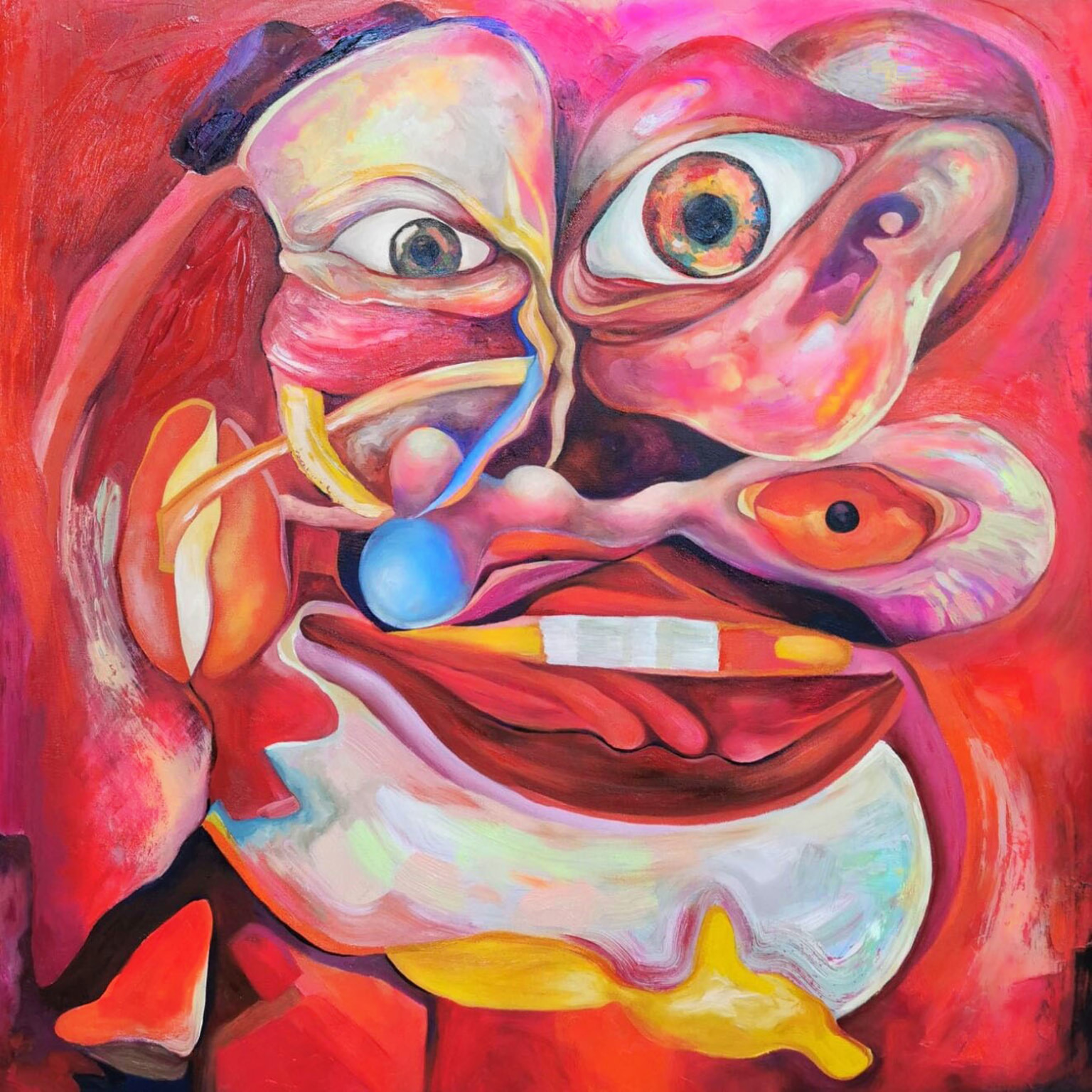
Red Tales, Eirdís, 2019, Oil on Canvas, 100 x 100cm
The exhibit attracted attention online, as well as on the streets as passersby stopped and watched Eirdís paint her sometimes vibrant, sometimes dark, mixed media works.
“I decided to keep it fluid. I wanted to add things every single day. Change things around to represent the global uncertainties right now,” says Eirdís. “Nobody knows what’s happening. I don’t even know when I might leave. Everyone around me has a lot of questions, so I wanted to keep it exciting in that sense. Add a positive note.”
Tokyo’s Art Galleries Adapt
Artists and gallery owners across Tokyo are feeling uncertainty as many wonder when they can open doors or go back to work again. In mid-February, Tokyo’s public museums closed, followed by major private museums. After Tokyo Governor Yuriko Koike’s request for people to stay home on the last weekend of March, many small independent museums closed doors, including Hiromart Gallery, located along the Kanda River just north of Shinjuku.
“Usually we have a show-must-go-on spirit”
Hiromart Gallery owner Hiromi Nishiyama canceled a solo exhibition showcasing the paper cuttings of Jad Fair, best known as the co-founder of the American alternative rock band Half Japanese. Fair’s art pieces are hanging on the wall, but there is no artist, and now no viewers.
“Usually we have a show-must-go-on spirit, but of course safety is more important than that,” says Nishiyama, who has hosted art openings in the middle of typhoons.
Open Letter gallery co-owners Shin Yamauchi and his wife Keiko spent nearly two years remodeling a house in a quiet residential neighborhood in western Tokyo, launching their first exhibition at the beginning of the year. They postponed their second until October.
They have used this time to update the Open Letter website and sell artwork and gifts online, with more plans in the future. “At this point, whether they like it or not, it has turned into a great opportunity to rethink and recreate a new way to deliver the art experience,” says Yamauchi.
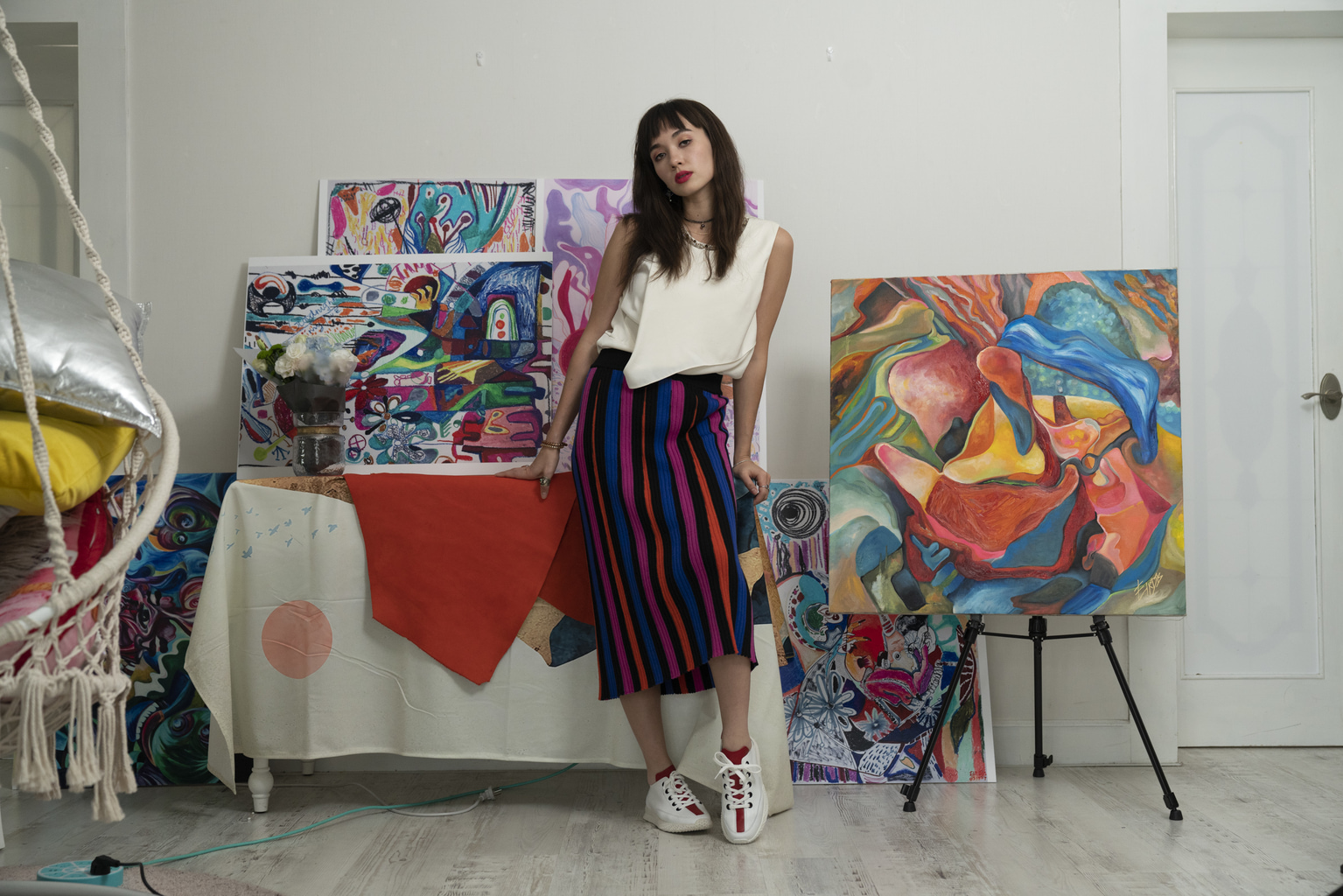
Eirdís Ragnarsdottir
The Foreseeable Future
In the Okachimachi district of Taito ward – a hidden time capsule of the Showa era located between Ueno and Akihabara – is the artists’ residence Almost Perfect. Illustrator Luis Mendo and his wife Yuka renovated a century-old rice shop and turned it into a cozy, creative space where art can flourish.
Due to travel restrictions, Almost Perfect’s Finnish resident had to cut her stay short and return home on the last flight to Helsinki. Mendo was able to provide a discounted residency to American artist Gabrielle Guthrie, who was stranded in Tokyo after nine months of traveling the world. She will stay for an indeterminate amount of time, and Mendo does not know when he can begin hosting exhibitions again.
“The saddest part – we all are missing the moments where we could meet and have a drink, draw, talk and learn from each other,” says Mendo, who launched an online distance residency program where he assists artists overseas. “I foresee once this passes there will be many more meetups and PechaKucha Night-kind-of-events flourishing throughout the city, which is a great thing.”
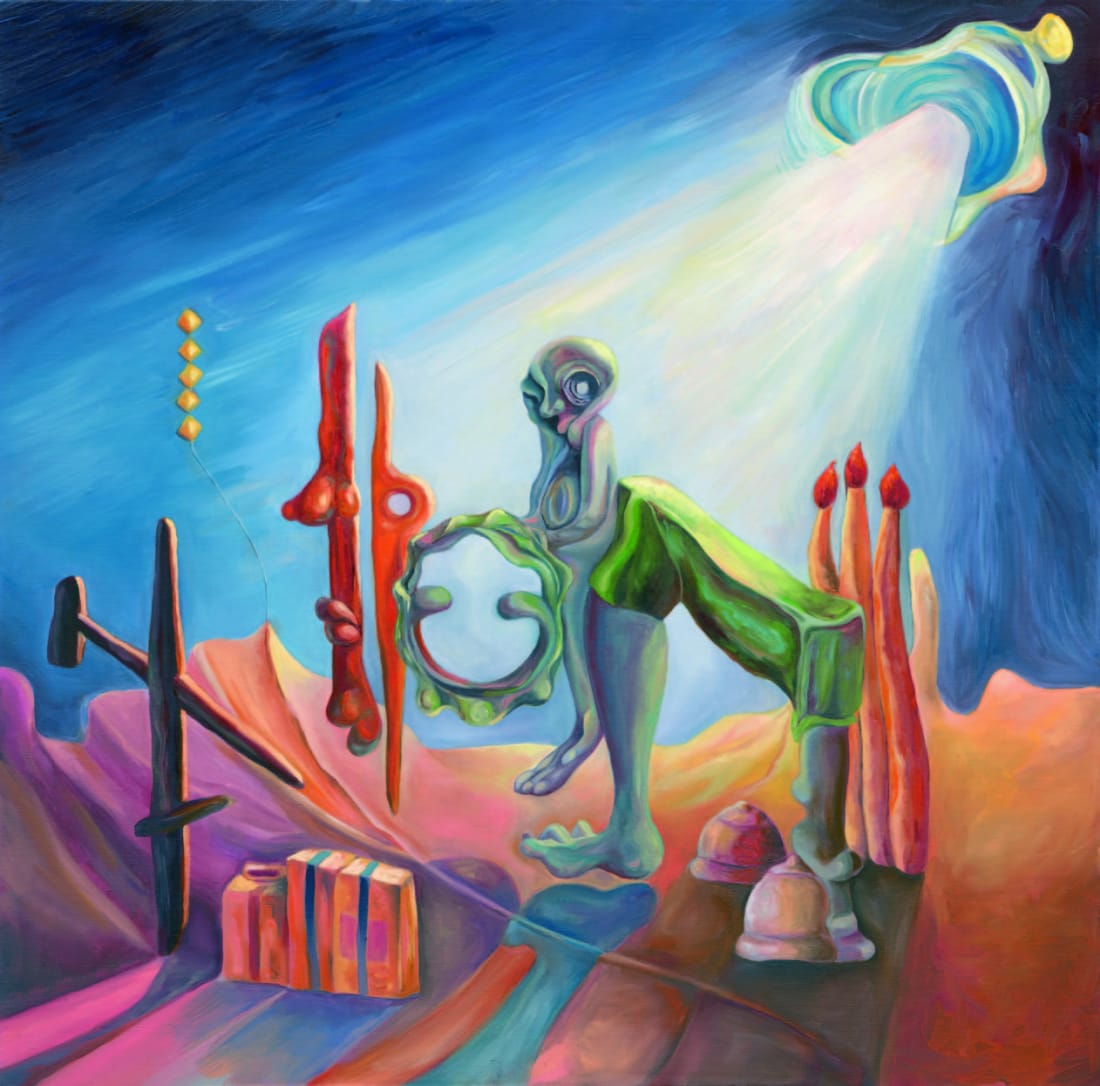
Beijing Skyline, Eirdís, 2019, Oil on Canvas, 100 x 100cm
Art Crosses Borders
Back in Harajuku, where the streets once bustling with archetypes of Tokyo’s youth culture are now eerily quiet, Eirdís takes us on a virtual tour of her current installation, all of which will be destroyed the following day.
She discovered Japanese paper and black ink during her trips to the Shinjuku art store Sekaido, and her experimentations with the materials have led to a new style. She admits that her previous surreal, colorful oil paintings were rightfully compared to the works of Salvador Dali, with whom she shares a philosophical bent.
Eirdís studied psychology and psychoanalysis at Gallatin, New York University, and she compares her style of art to free association, expressing the whims of the id spontaneously without censorship.
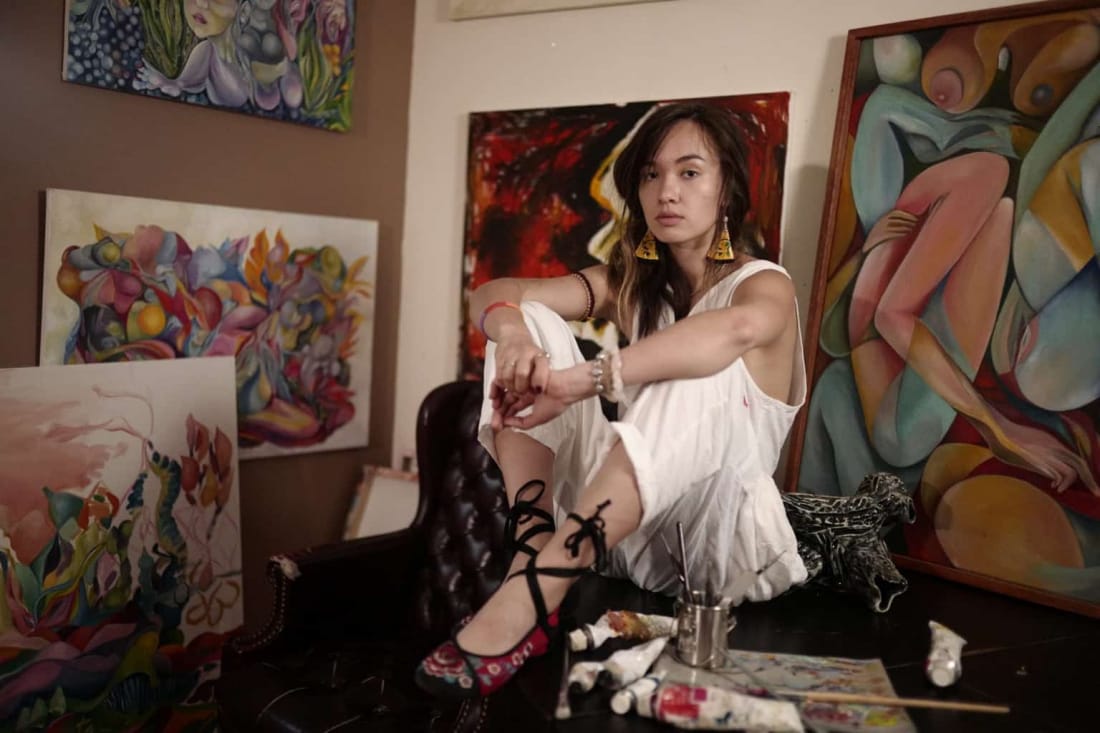
Eirdís Ragnarsdottir
Via smartphone she displays a new work – a surreal inkblot test of lines, curves, animals and awakening eyeballs resting on a sea of red paint. At the center she subconsciously painted a dark red circle enveloped in a field of white – an image the viewer can easily interpret as the symbol of Japan transmogrified into a coronavirus cell.
While the eyeballs Dali painted opened the world to paranoia, Eirdís hopes her images deliver the viewers to existing truths. She says the continuously connected black lines of Japanese ink represent the new connections shared globally.
“At the end of the day we are all connected. Borders to countries don’t matter. We are all one,” says Eirdís. “When the world is uncertain, now is the time to reconnect.”
This article originally appeared in the May 2020 issue of Tokyo Weekender

